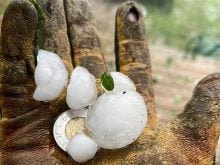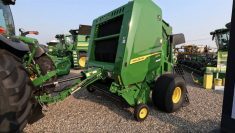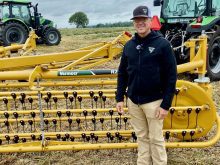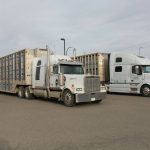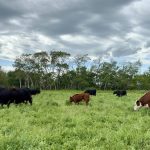Don Dewar harvested a beautiful crop of hard red spring wheat last fall.
But when the farmer from Dauphin, Man., tested what was going into his bins, he discovered an ugly truth: it was tainted by fusarium and would bring a not-so-beautiful price.
Instead of selling as No. 1, he might end up with a No. 3 grade, which he knew would cost him about 75 cents per bushel.
“It’s a heck of a difference when it goes from a No. 1 to a No. 3,” he said.
Read Also
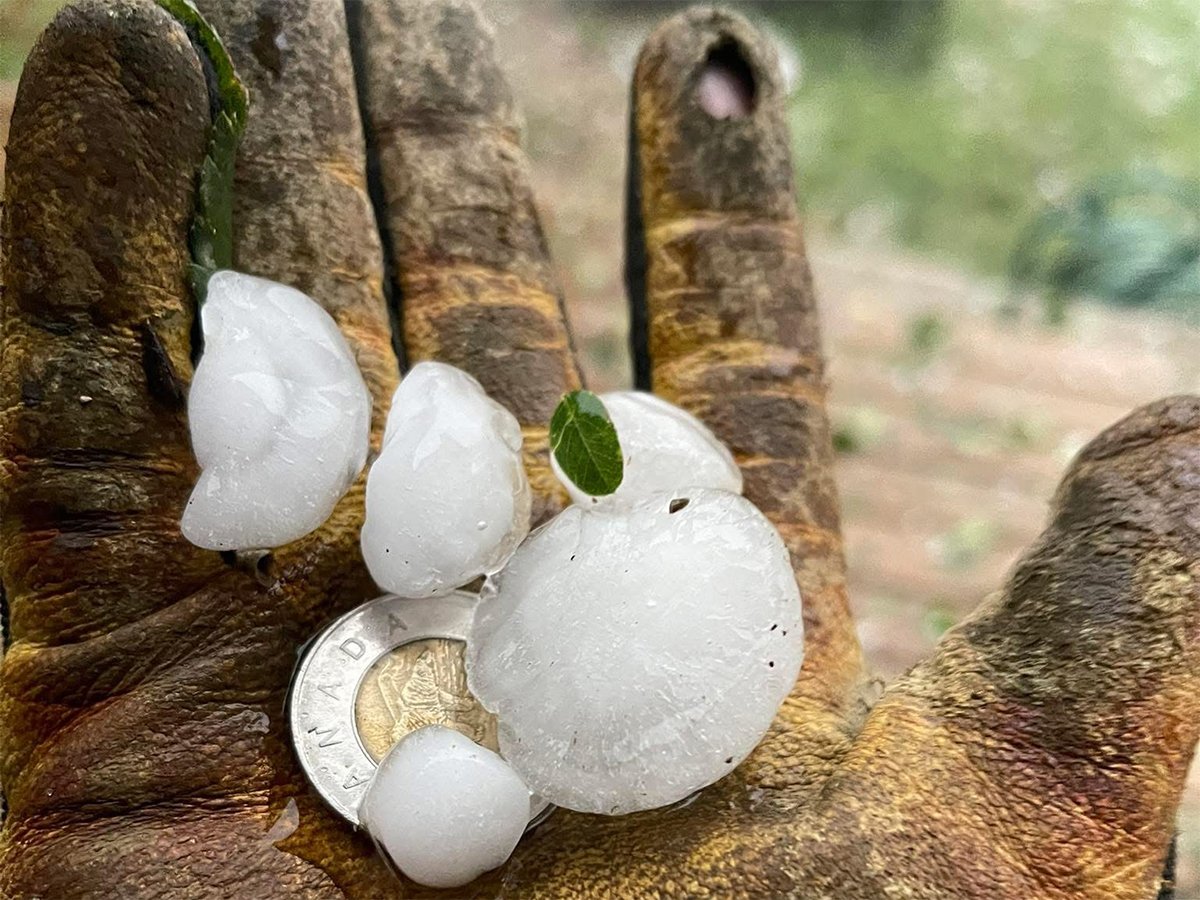
Half million acres of Alberta crops affected by massive hail storm
Late August hail storm catches farmers in prime harvest mode, damaging half million acres of crops in Alberta.
Fortunately for Dewar, the Canadian Wheat Board and grain companies have found ways in the past two years to sell fusarium-tainted grain. Dewar’s contaminated crop ended up priced as No. 2, which resulted in only a 35 cent per bu. drop in price.
However, this yearly frustration with fusarium, which can either appear and ruin the value of a crop or be absent and bring relief, has him worried about what he and other eastern prairie farmers will discover this fall when they test their grain.
Wheat is already a money-losing proposition at today’s forward prices and will become a significant drain if fusarium problems are big this year.
“If we get just an average yield and get fusarium, it’s going to be a major money loser,” Dewar said.
That’s why he’s happy the Western Grains Research Foundation, for which he is a farmer representative, is looking at how farmers can minimize infection. Producers know to not push rotations too hard, but Dewar hopes the foundation can fund research that develops agronomic practices, including a combination of in-crop treatments such as fungicides, resistant varieties and careful rotations.
For Dewar, the most annoying part is farmers’ inability to do much to combat the disease. Farmers have to grow cereals, so the danger of fusarium can’t be completely avoided.
“It would be nice sometimes to be able to blame it on yourself, by saying, ‘I did this wrong’ or ‘I did that wrong,’ and that would let you know how to fix it, but right now there isn’t really anyone or anything to blame.”



